 About GamePeople
About GamePeople
Subscribe to the Story Gamer column:![]() RSS or
RSS or
![]() Newsletter.
Newsletter.
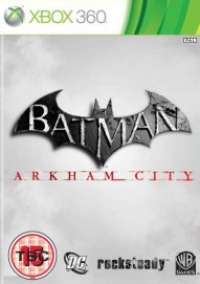
Format:
360
Genre:
Fighting
Style:
Thirdperson
Singleplayer
Buy/Support:
Support Mark, click to buy via us...
Other GamePeople columnists have reviewed this from their perspective - huh?:
Perpetual Gamer (360)
Reporting Gamer (360)
Story Gamer (PS3)
Novel Gamer (PS3)
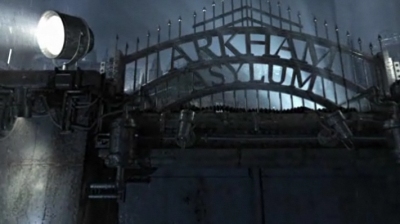
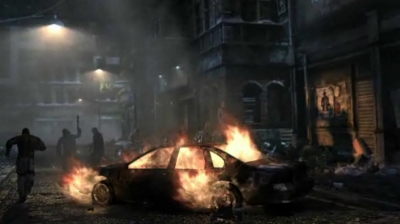
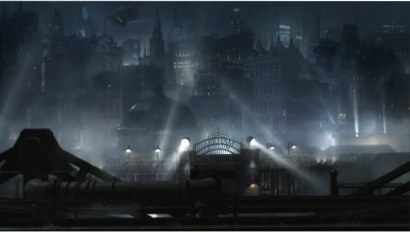
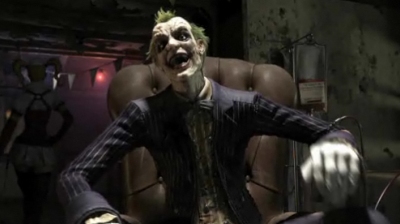
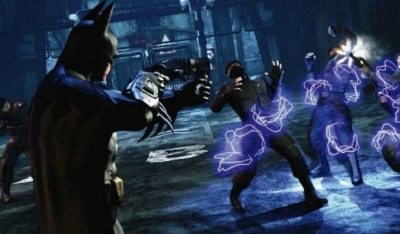
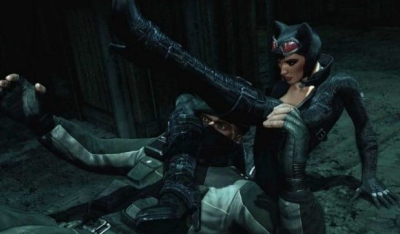
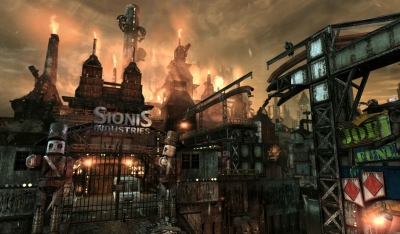
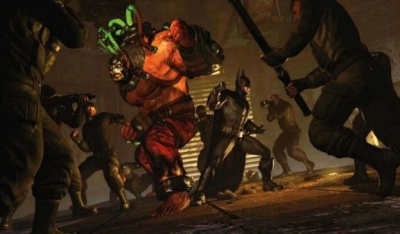

Further reading, films and books that create similar stories:
Batman Arkham City 360 expands on the brilliant Arkham Asylum to present a truly epic comic book narrative, only slightly tripped-up by adolescent attempts to be overtly badass.
Batman is my favourite character in all fiction. I'm not even joking. Let me tell you why.
The basic story, of young Bruce Wayne seeing his parents murdered, and growing up to seek justice as Batman, is a near-perfect platform for open-ended storytelling, one which provides endless narrative possibilities. Batman is a detective, a fighter, an adventurer, even sometimes a lover or a - usually surrogate - father.
Most of all, though, Batman is an expression of a basic desire in many of us, the desire to be able to correct injustice violently, cathartically. His war on crime will never lose its appeal, because we'll never live in a perfect world where injustice and unfairness are eradicated - that's why Batman is as appealing in the second decade of the 21st century as he was at his creation on the eve of World War II.
As you would imagine for such a long-lived character, Batman is tremendously flexible. In only the last few years he's been in: a brightly coloured kids cartoon The Brave and the Bold (the Wii game of which I'll be reviewing soon); a relatively realistic, serious film about the nature of justice and vigilantism, The Dark Knight; and of course Arkham Asylum, Rocksteady's 15-rated hard-hitting action stealth game.
Arkham Asylum was praised for bringing Batman and his world to life, authentically translating all the important aspects of a Batman story into gameplay. The satisfying rhythm of the counter- and combo-based combat put the player right into the boots and gloves of a honed martial artist, bouncing between opponents to fight back half a dozen villains at once.
Everything about controlling Batman felt just right, with a wide range of gadgets allowing him to ride a zip line to a rooftop, then glide down to kick a goon in the face.
Then there was the detection element, a mystery plot that involved many famous, and more obscure bat-villains, and the environment of Arkham Asylum itself, atmospherically rendered and crammed with secrets waiting to be found, secrets that built up a detailed, gothic back story to that doomed institution.
This extended recap is by way of a preamble to the following reassurance: none of those excellent mechanics and qualities have been broken in Arkham City. In fact, this does what any great videogame sequel - and the recent Assassin's Creed games spring to mind here - need to do, that is expanding the game into new areas without losing sight of what made the original great.
Batman is an expression of a basic desire to correct injustice violently, cathartically.
The most obvious development is Arkham City itself. Arkham Asylum was a large contained location that in fact broke down into a lot of different self-contained areas, which were gradually unlocked across the game's story.
Arkham City, on the other hand, is one single open area, a sealed-off district of Gotham City that has been converted into an open air prison/asylum. Riffing on the No Man's Land arc from the Batman comics, the Arkham City concept takes a slice of Batman's urban stomping ground and turns it into a war zone where virtually everyone is an eminently punchable thug, and the big bad villains are warring gang bosses.
The openness of Gotham, then, but retaining the oppressive feel of the Asylum. The entire of Arkham City's exterior map is accessible from the start of the game, with the narrative opening up interiors, subway stations and the like as the story unfolds.
This particular corner of Gotham has all the crazy architectural excesses of the asylum, so the urban setting conceals a wide variety of environments that make the game feel like a journey worth taking.
Perversely, considering this is Story Gamer, I'm not going to actually talk about the core story of the game, because it surprised me very early on, and I'm inclined to say it's worth letting it surprise you too. The story is largely a progression of encounters with various batvillains, and its a pleasure to let that unfold unencumbered with too much foreknowledge.
I'd be lying if I said that the plot ties perfectly together, or makes entirely logical sense.
Suffice to say that Batman knows that - aside from the moral implications of its very existence - there's something wrong in Arkham City and a terrible plot afoot. From there signals and plot devices and leads are chased, taking Batman back and forth and over and underneath the city to uncover the truth and prevent disaster.
I'd be lying if I said that the plot ties perfectly together, or makes entirely logical sense, but this is a superhero adventure story not kitchen sink drama, and Arkham City strings its set pieces together well enough to paper over the cracks.
While Arkham Asylum had plenty of secrets hidden around its map, the steady opening up of that map and solid progression of the story didn't really leave any room for side missions. Perhaps taking a leaf out of Assassin's Creed 2's book, Arkham City adds a ton of side missions that can be found while exploring the city, some completely detached from the main narrative.
There are innocents that need rescuing, uneasy alliances to be forged and, yes, plenty of Riddler riddles to be solved. Some of these side-missions bring back characters familiar from the previous game, while others bring in obscure story elements from the comics. One side mission brought in such a surprising, and to me much-loved, character that I was left gawping for the rest of the evening.
It's that kind of game, one which keeps on giving in the main campaign, even before you get on to the challenge modes and replay options.
The richness of the content is matched by the execution. Arkham City looks fantastic, and the extended draw distance of the larger environment hasn't hampered the level of detail at all. It's a superbly atmospheric locale, stylised but believable, and when snow starts to fall over Gotham it's hard not to feel a chill.
The interpretation of Batman and his world is aimed at the stereotypical gamer in their late teens.
The sound design is also great, with crunchy sound effects, and a surveillance element that allows Batman to listen into the chatter of both the inmates and the private security warders who watch over them.
It's a very rich world, fantastically executed and made a joy to explore by one of the finest, most responsive control systems in videogames. A chance to feel really superheroic in a heightened world of cruel, cruel villainy.
A perfect game, then? Well, not quite.
There is one area of contention in Arkham City, one that was present in the previous game but which has got worse this time around. The interpretation of Batman and his world in the games is one very much aimed at the stereotypical gamer, in other words young men from their late teens upwards who like things to be, for want of a better word, badass.
While this is a perfectly reasonable demographic to aim for - and while I'm not that young any more I do still like awesome, over the top violence in my games - Arkham City does try a bit too hard in some areas to appeal to this audience, and comes unstuck in the process.
In most cases, the results of this adolescent posturing are just risible over-extensions of the game's leather and latex aesthetic, like the comically skatepunky version of Robin who drops in and out of the plot.
More depressing is the handling of some of the female characters in the game. As with the previous game, the female villains are portrayed in an unusually leering manner, with the reworking of Harley Quinn from diminutive female jester to buxom gothic lolita particularly notable.
A cloud of sexism permeating through it is both annoying and an insult.
Harley has an even more ridiculous costume here, and the involvement of a cleavage-displaying Catwoman doesn't help matters. Even though Catwoman has always been a sexy, badgirl character, and her role in the plot is as independent and assertive as any fan would like, it does feel like damsel-in-distress Vicki Vale is the only major female character who doesn't dress and act like an adolescent male fantasy.
All of this would be a minor irritant if it wasn't for the grating use of the word 'bitch' by various minor characters, both criminals and cops, in reference to both the supervillains and, in the criminals' cases, civilian hostages too. The same word, repeated constantly, becomes wearing and even though it's mostly the bad guys doing it, creates a haze of misogyny.
It's a tiny part of a great game, but one that really irritates after a while. Batman, a white, rich, heterosexual male is a fantastically egalitarian character because he doesn't judge on race, gender or sexuality - his monomania is a moral one, he cares about justice and nothing else. So his game having a low-level cloud of sexism permeating through it is both annoying and an insult to the presumed mentality of players.
Damsel-in-distress Vicki Vale is the only major female character who doesn't dress and act like an adolescent male fantasy.
Regardless of these irksome aspects, Arkham City is an absolutely superb game, one which creates a great Batman story and puts the player right at the heart of it. It's both a treat for fans of the character, and a great introduction for non-fans who are just after a brilliant action adventure. Videogame superheroics don't get any better than this.



Mark Clapham writes the Story Gamer column.
"I love a good story. Games tell many different stories: the stories told through cut scenes and dialogue, but also the stories that emerge through gameplay, the stories players make for themselves."
Here are the games I've been playing recently:
© GamePeople 2006-13 | Contact | Huh?

|
Family Video Game Age Ratings | Home | About | Radio shows | Columnists | Competitions | Contact
With so many different perspectives it can be hard to know where to start - a little like walking into a crowded pub. Sorry about that. But so far we've not found a way to streamline our review output - there's basically too much of it. So, rather than dilute things for newcomers we have decided to live with the hubbub while helping new readers find the columnists they will enjoy. |
Our columnists each focus on a particular perspective and fall into one of the following types of gamers:
|